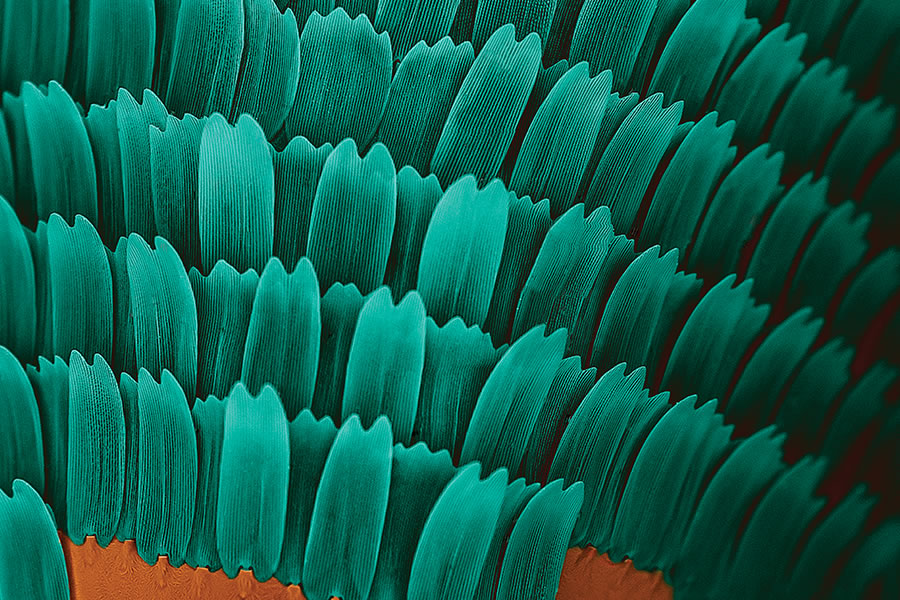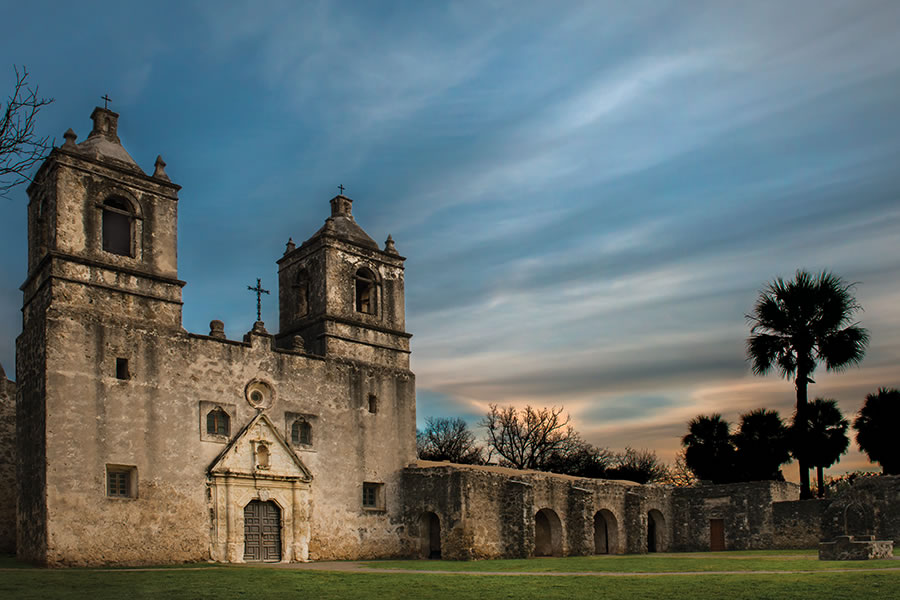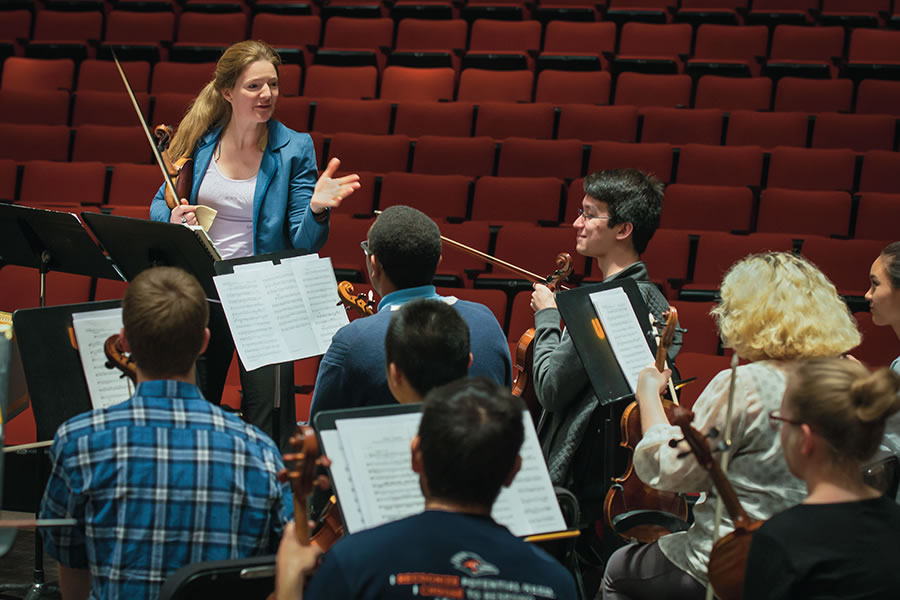
Quantum Deep
Touch a butterfly or moth wing, and what feels and looks like a powdery substance remaining on your fingertips is actually the tiny scales that the insect sheds throughout its life. Magnify the wing—of a monarch butterfly in the photo here—with a scanning electron microscope housed at UTSA’s Kleberg Advanced Microscopy Center and see just how the Lepidoptera order of insects got its name. The term derives from the Greek words meaning scale and wing.
Since adding two new microscopes to the laboratory in the past year—including one that has cutting-edge capabilities to perform computed tomography imaging—UTSA now has one of the most complete electron microscopy centers in the country for the study of nanomaterials.
Used for a variety of studies, including tackling breast cancer, improving diesel fuel, and investigating osteoporsis, the microscopy center’s advanced capabilities are attracting researchers from international institutions.
For more on visiting international scholars, see “Research Without Borders,” and for more on UTSA’s monarch research, see our cover story, “Of Monarchs & Milkweed.”

He’s Our MVP
Teddy Williams positions himself in a set of blocks at the start of the 60-meter dash at the 2010 NCAA Indoor Championships in Fayetteville, Ark. Now a UTSA alumnus, who graduated with a B.S. in kinesiology in 2011, the sprinter wrapped up his collegiate career with three All-American titles, nine Southland Conference championships, and four conference Athlete of the Year awards
Williams, who has been called “the greatest track athlete in school history,” aimed for more glory on February 7 with the NFL’s Carolina Panthers in a bid for a Super Bowl ring that fell short in 24–10 play against the Denver Broncos.
Sombrilla Magazine asked Williams about his fondest memory of his days at UTSA: “I’d have to say my sophomore year, because so many great things happened. It started off when I made the indoor national meet for the first time. That really helped me get into a groove for the rest of the season. We then swept the conference indoor and outdoor championships for the first time, which was a great experience. I’d won a few individual championships before that, but this was the first time we won both team championships in the same year. We achieved the first national ranking in UTSA history during the outdoor season. I really began to grow with my teammates that year, especially the older ones, as we traveled all over the country.”

Preserving Our Heritage
Mission Concepcion has stood in San Antonio since 1731, when Franciscan friars moved from the mission’s original location in East Texas, where it was established during the Spanish colonial period for converting local peoples to Catholicism. It’s now part of the San Antonio Missions National Historical Park with its three local sister missions and the Alamo.
The Missions Historic District gained status as a UNESCO World Heritage Site in 2015 with the help from UTSA architecture professor William Dupont, who has advised local and federal bodies in the analysis of heritage status.
And UTSA’s relationship with the missions is ongoing. Sedef Doganer, another architecture professor, has studied the economic impact of the missions for San Antonio. She has received a grant to complete a handbook on heritage tourism for the Missions Historic District to assist local residents and officials realize the benefits of cultural heritage.

Scholar in Residence
Internationally renowned British baroque violinist Rachel Podger conducts—and plays along with—a UTSA orchestral rehearsal. She’s one of a handful of guest scholars who visit the university each year to collaborate with students and faculty. Some give public performances, as Podger did while in residency with the College of Liberal and Fine Arts during the spring semester. When not touring the globe with various orchestras and other classical players, Podger works with her husband to help young musicians through the Mozart Music Fund, which they founded.
